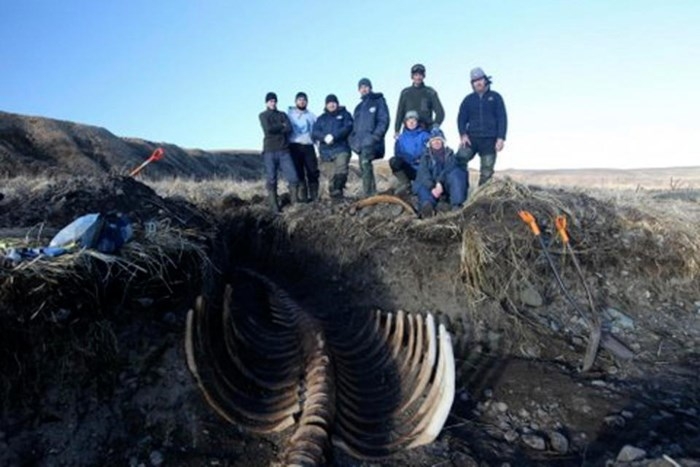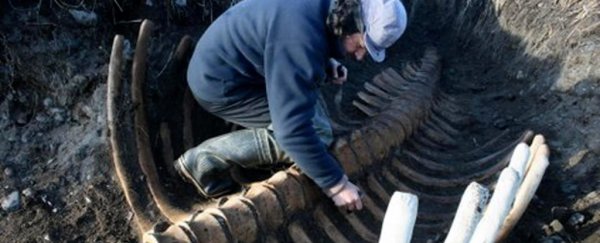It may be lacking a head, but a skeleton found on a beach in Siberia is still one of the most complete of its kind.
The massive bones unearthed on an isolated Bering island belong to an animal that's been extinct for nearly 250 years - the giant Steller's sea cow. And the skeleton's excellent condition has researchers excited to learn more about the long-gone species.
At first glance, the rib bones of the skeleton jutting out of the sand resembled the palings of an old fence. Led by Marina Shitova of Commander Islands Nature and Biosphere Reserve, a team of scientists had to dig just 70 centimetres (2.3 feet) to reveal the entire skeleton.
Steller's sea cows (Hydrodamalis gigas) were one of the last of the Pleistocene megafauna, whose populations were already declining when they were discovered in 1741. As their last refuge, sea cows lived around the then-uninhabited Commander Islands in the Bering Sea.
They belonged to the order Sirenia, which includes manatees and dugongs. And, like many extinct megafauna, the sea cows were much larger than their modern cousins.
For example, manatees grow up to 4 metres (13 feet) long, with a maximum weight of 1,590 kilograms (3,500 pounds), and dugongs reach lengths over 3 metres and weigh up to 420 kilograms.
The sea cow, which is more closely related to the dugong than the manatee, is thought to have grown up to 10 metres long, and weighed over 5 metric tons.
The animal was first discovered by Georg Wilhelm Steller, a German naturalist aboard the Great Northern Expedition of explorer Vitus Bering. According to Steller's journal, the expedition was shipwrecked on Bering Island, and spent the winter there.
It was then that Steller discovered the animal, detailing its appearance and behaviour, and even dissecting a specimen.
The starving crew also, with great difficulty, killed several of the sea cows for food. It's even possible that the skeleton found in Russia is from one of the carcasses they slaughtered.
 (Commander Islands Nature and Biosphere Reserve)
(Commander Islands Nature and Biosphere Reserve)
The skeleton was missing its head and a few bones, but the excavation team found 45 spinal bones, 27 ribs, the left shoulder blade, shoulder and forearm bones, and several wrist (metacarpal) bones.
The total length was 5.2 metres; with the head, the team estimate, the animal would have reached 6 metres in length.
Skeletons of Steller's sea cow can be found in museums around the world, although many "complete" specimens are actually strung together from pieces of several skeletons.
The most recent complete discovery before this one was found on Bering Island in 1987, measuring around 3 metres in length. Parts of it are currently on display in the Aleut History Museum on the island.
The newly discovered specimen will be carefully cleaned and assembled before being put on display at the Nature Reserve's visitor centre, to help inform people about the natural history of the Commander Islands.
